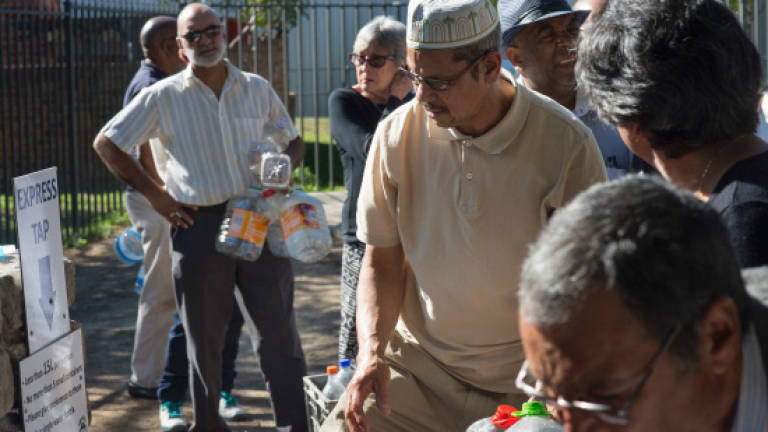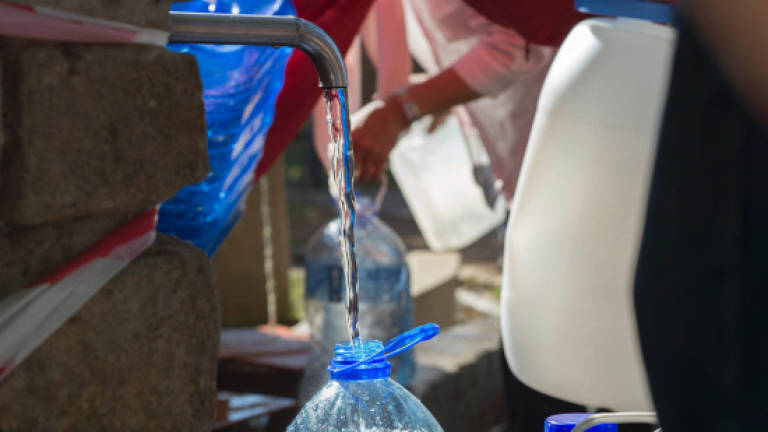Cape Town cuts back to survive worst drought in 100 years


CAPE TOWN: As Cape Town suffers its worst drought in a century, residents have been told to restrict showers to two minutes and flush toilets only when "absolutely necessary".
The city – South Africa's biggest tourist hotspot – and the surrounding Western Cape province have been declared a disaster area by the local government, with just 10% of usable water left in the dams supplying the area.
Two hours from the city, Theewaterskloof Dam, the main source of water for Cape Town, has been reduced to a flat and sandy desert, with the petrified remains of orchards flooded when the dam was built in the 1970s standing starkly under the sun.
At the local watersports club, exposed moorings reveal where sailboats once floated. The long slipway now ends about 30 metres from the water's edge.
"I've worked here for about 20 years and I've never ever seen the dam this low," club secretary Lise Wheeler told AFP.
For Cape Town residents, the drought has let to a gradual escalation of restrictions, from the limits on splashing at public pools earlier this year to the current complete ban on topping-up swimming pools or watering gardens.
The newest restrictions limit residents to 100 litres per person per day and rule out its use for anything other than cooking, drinking and essential cleaning.
Last week Virgin Active, a health club operator, said it would close saunas and steam rooms at its gyms across the province.
"The best strategy to manage a drought effectively is to manage demand, which is what we are doing," city councillor for water Xanthea Limberg told AFP.
No easy answers
Earlier this year, the city published a name-and-shame list of the worst water offenders in Cape Town, and it says it is issuing fines and notices to appear in court.
But officials themselves have faced criticism for failing to implement usage restrictions sooner, and have been accused of ignoring warnings by experts in the years before the drought.
Some Capetonians have taken to collecting their own water at a natural spring outside a brewery in the city.
Many are convinced that with dam levels so low, the quality of tap water has declined – a rumour that the city has been battling for months.
"This is the only drinkable water I can get," one resident told AFP.
University of Cape Town climate scientist Peter Johnston said officials faced a long-term problem.
"What we've had now is three seasons in a row where the rainfall has been low, and that's a one-in-a-hundred-year occurrence," Johnston told AFP.
Strong summer rains have seen much of southern Africa recover from a drought induced by El Nino.
But Mediterranean-like Cape Town receives most of its rain in the southern hemisphere's winter – and scientists warn there is no guarantee of a good rainy season.
"Even if we get a real wet winter, those dam levels are only going to go up by about 40% to 50%," Johnston said.
"If we get regular good rainfall, we're still going to be pretty much in the same position this time next year. That's the scary bit."
Many climate models point to a hotter and drier Western Cape, with high pressure systems blocking rain-carrying fronts more frequently.
"This means that even if the situation stays the same in terms of population size and water usage, the long-term future is for less water falling out the sky," Johnston said.
Meaning that Cape Town will have to find its water elsewhere.
In the short term, that involves recycling waste water and drilling into aquifers under the nearby Table Mountain landmark.
The city is also looking at accelerating plans to build two desalination plants, a move already adopted by some of the driest towns in the region.
"Restrictions are going to be a reality for the foreseeable future," Limberg said. — AFP